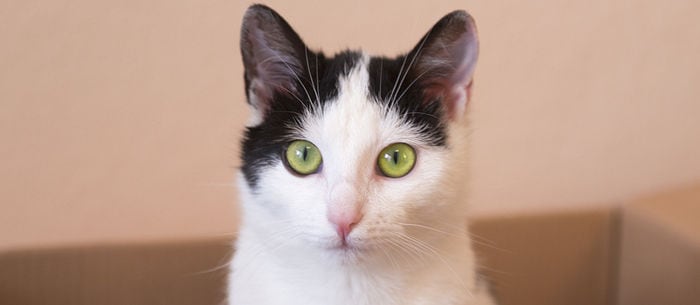If your cat is has a never-ending thirst for water, is straining in the litter box or even avoiding the litter box, could it be a urinary tract infection (UTI)? A UTI in cats can be just as painful as it is for humans – here’s what you need to know.
What is a UTI?
In simplest terms, it’s a bacterial infection of the bladder, explains Dr. Michele Paul, a veterinarian and the owner of the Allentown Cat Clinic in Pennsylvania. More specifically, though, according to Dr. Christine Hayes, a consulting veterinarian in Clinical Toxicology at the American Society for the Prevention of Cruelty to Animals (ASPCA) Animal Poison Control Center, “a true urinary tract infection is typically caused by bacteria, although it can originate from fungus or a parasitic infection.”
Often, says Dr. Hayes, if your cat has signs of a UTI, he might actually have something called feline lower urinary tract disease (FLUTD), which isn’t a single problem, but a collection of symptoms that can have several possible causes.
FLUTD, she adds, can be caused by a UTI or any of the following:
- Urinary tract stones, crystals or debris within the bladder or urethra.
- Bladder inflammation.
- Incontinence from excessive water drinking (often due to an endocrine disease, such as diabetes mellitus).
- Injury to the urinary tract.
- Spinal cord problems that can result in the pet not being able to fully empty the bladder.
- Stress, which can contribute to symptoms.
Symptoms of a UTI in Cats
Two of the most common signs or symptoms of a UTI, according to Dr. Paul, are your cat urinating in places other than the litter box and/or urinating only small amounts frequently. Dr. Hayes adds that the symptoms of a UTI and FLUTD are the same:
- A cat straining to urinate or crying out when using the litter box.
- Lethargy.
- Vomiting.
- Increased water intake.
- A cat exhibiting signs of pain when being picked up (especially if being held around the abdomen).
- Frequent licking of the urinary opening.
When to Call Your Vet
Don’t delay. Call your vet as soon as you find your cat exhibiting any of the symptoms, especially if the cat is straining to urinate or in pain. Do this ASAP, says Dr. Paul, because UTIs in cats are very painful. Dr. Hayes also warns that immediate care is imperative because “if a blockage is present, this is a life-threatening medical emergency.”
How to Keep Your Cat Comfortable
“Push fluids, such as canned food with extra water or chicken broth,” suggests Dr. Paul. Recommendations to help pets recover will depend on the cause, notes Hayes. She instructs owners and pet sitters to administer any prescribed antibiotics through to completion. Keep the cat’s litter box clean and continue to monitor the box. Access to fresh water and a prescription diet (given for some cases of FLUTD) will also aid your cat.
Both doctors instruct that you should consult with your veterinarian if you believe your pet is in excessive pain, as pain medication may be prescribed. But Dr. Paul warns, “Do not use over-the-counter bladder pain meds, such as Urocalm or Urostat, which are very toxic to cats!”
Want more health tips? Read Keeping Your Cat Healthy.
Lauren B. Stevens has dealt with many a UTI in her lifetime of cat ownership. When she’s not scheming to rescue a cat (or two), Lauren writes for many online outlets, including her own blog, lo-wren.
* This article is for general informational purposes only. It is not intended nor implied to be providing medical advice and is not a substitute for such advice. The reader should always consult a health care provider concerning any medical condition or treatment plan. Neither Care.com nor the author assumes any responsibility or liability with respect to use of any information contained herein.



